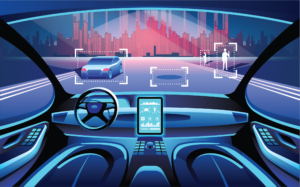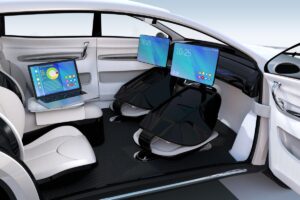Self-driving cars, once relegated to the realm of science fiction, have become an emblem of technological innovation in the 21st century. The seeds of this revolutionary concept were sown decades ago, with early experiments in automation dating back to the mid-20th century. However, it was not until the 21st century that significant strides were made towards realizing the dream of autonomous vehicles. Visionaries like Sebastian Thrun, a Stanford University professor, played a pivotal role in propelling self-driving technology from the realms of imagination to tangible reality.
The concept of self-driving cars hinges on the integration of various cutting-edge technologies, including artificial intelligence, machine learning, and sensor technology. Central to this paradigm shift is the development of sophisticated algorithms capable of interpreting real-time data and making split-second decisions. These algorithms enable autonomous vehicles to perceive their surroundings, anticipate potential hazards, and navigate complex environments with unparalleled precision. Moreover, advancements in sensor technology have facilitated the creation of robust perception systems, allowing self-driving cars to detect and respond to objects, pedestrians, and road markings with remarkable accuracy.
The transition from conceptualization to practical implementation has been marked by a series of significant milestones. In 2004, the Defense Advanced Research Projects Agency (DARPA) hosted the DARPA Grand Challenge, a landmark event that catalyzed research and development in the field of autonomous driving. Although none of the participating vehicles completed the 150-mile desert course, the event served as a catalyst for innovation, inspiring researchers and engineers to push the boundaries of self-driving technology further. Subsequent iterations of the DARPA Grand Challenge witnessed exponential progress, with participating vehicles demonstrating increasingly sophisticated capabilities.
Technological Advancements

The evolution of self-driving cars is intrinsically linked to the rapid advancement of technology, particularly in the realms of artificial intelligence and sensor technology. One of the most significant breakthroughs in recent years has been the development of deep learning algorithms, which have revolutionized the field of machine learning. These algorithms leverage neural networks to analyze vast amounts of data and extract meaningful patterns, enabling autonomous vehicles to learn from experience and improve their performance over time. Deep learning has proven instrumental in enhancing the perception and decision-making capabilities of self-driving cars, allowing them to navigate complex environments with unprecedented accuracy.
In addition to advancements in artificial intelligence, sensor technology has undergone rapid evolution, paving the way for more robust and reliable perception systems. LiDAR (Light Detection and Ranging) sensors, in particular, have emerged as a cornerstone of autonomous driving technology, providing high-resolution 3D maps of the surrounding environment. By emitting laser pulses and measuring the time it takes for them to bounce back, LiDAR sensors enable self-driving cars to generate detailed spatial representations of their surroundings, including the precise location of objects, pedestrians, and other vehicles. This level of situational awareness is essential for ensuring the safety and efficiency of autonomous driving systems.
Furthermore, the advent of 5G connectivity holds immense promise for the future of self-driving cars, enabling real-time communication between vehicles, infrastructure, and other stakeholders. With ultra-low latency and high bandwidth capabilities, 5G networks facilitate seamless data exchange and coordination, enhancing the overall reliability and responsiveness of autonomous driving systems. From vehicle-to-vehicle (V2V) communication to vehicle-to-infrastructure (V2I) integration, 5G technology is poised to unlock new opportunities for innovation and collaboration in the realm of autonomous mobility. Moreover, individuals seeking to delve into this transformative field can benefit from an initial firearms course in Los Angeles, where they can acquire the necessary skills to ensure safety and security in their autonomous vehicle ventures.
Regulatory Landscape
As self-driving cars edge closer to widespread adoption, policymakers and regulatory bodies face the daunting task of establishing comprehensive frameworks to govern their deployment and operation. The advent of autonomous driving technology raises a myriad of ethical, legal, and safety considerations, necessitating a proactive approach to regulation and oversight. One of the primary challenges confronting regulators is striking a balance between fostering innovation and ensuring public safety, particularly in light of the potential risks associated with autonomous vehicles. In bustling urban centres like Austin, where traffic congestion is a prevalent issue, integrating self-driving cars could significantly alleviate the burden on commuters and pave the way for enhanced mobility solutions, complemented by innovative services such as physical therapy in Austin for those in need of specialized care.
Moreover, the absence of uniform regulatory standards poses a significant barrier to the widespread adoption of self-driving cars, as divergent regulations across jurisdictions could hinder interoperability and impede technological progress. To address these challenges, policymakers must collaborate with industry stakeholders to develop coherent and adaptive regulatory frameworks that accommodate the evolving nature of autonomous driving technology. This entails establishing clear guidelines for vehicle testing, certification, and liability, as well as addressing broader societal concerns related to privacy, cybersecurity, and employment displacement. Additionally, as technology advances, innovative solutions such as creatine monohydrate gummies for enhanced cognitive function could play a role in shaping future regulations surrounding driver safety and performance enhancement.

